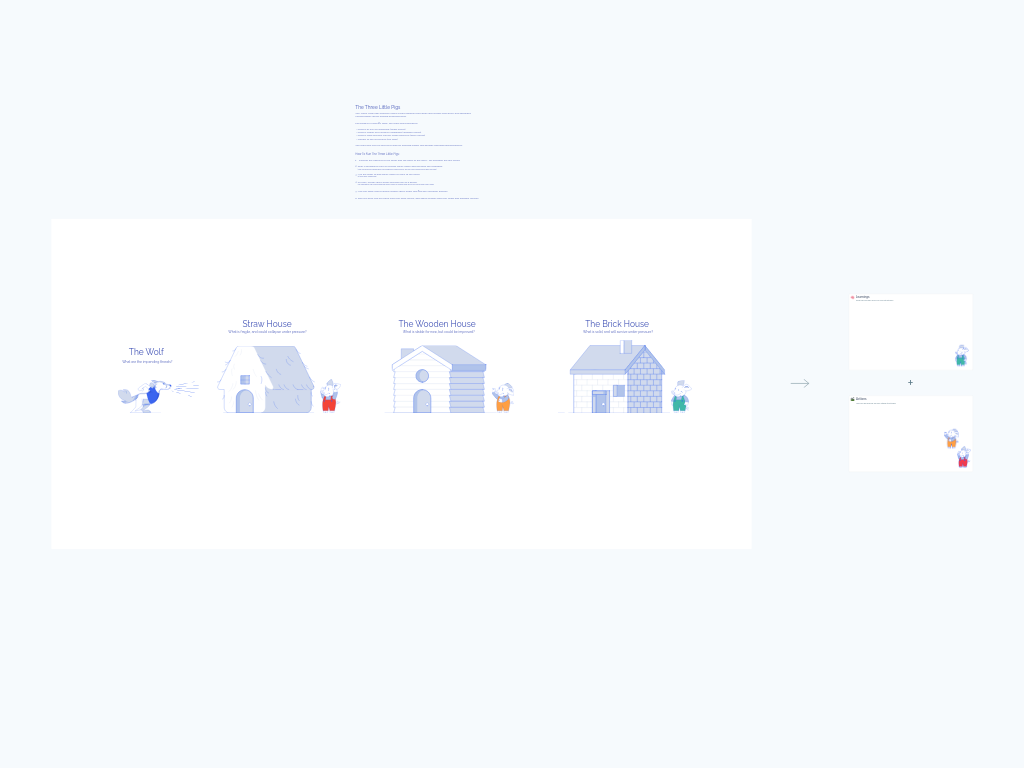KALM - Keep, Add, Less, More Retrospective
Looking to improve how your team delivers value? The KALM retrospective provides a structured framework for teams to reflect on their processes, celebrate what's working, and identify areas for improvement. This value-focused retro format uses four simple categories to generate actionable insights for agile and product teams.
What Is the KALM Retrospective?
The KALM retrospective is a value-oriented retrospective format that helps teams assess their current practices through four distinct perspectives:
- Keep: Practices that deliver value and should be continued
- Add: New ideas or experiments to introduce
- Less: Activities that could be reduced without sacrificing value
- More: Current practices that should be amplified for greater value
Unlike more problem-focused retros, KALM balances appreciation of current strengths with opportunities for improvement. The framework creates a psychologically safe environment for team members to share feedback, making it particularly effective for teams where direct criticism might be uncomfortable.
Benefits & When to Use
KALM is especially valuable when:
- You want to focus specifically on value delivery rather than general team dynamics
- Teams need a balanced approach that acknowledges both strengths and improvement areas
- You're seeking to introduce innovative ideas while refining existing processes
- Team members might be hesitant to provide direct feedback
- You want clear, actionable outcomes from your retrospective
The four-quadrant approach ensures comprehensive reflection while maintaining a positive, forward-looking tone throughout the session.
How to Run a KALM Retrospective Session
Total time: 45-75 minutes (depending on team size)
Set the stage (5 minutes)
- Introduce the KALM format and explain each quadrant
- Define the scope for reflection (e.g., last sprint, last quarter)
- Start the session as the Facilitator to enable private sticky note writing
Individual reflection (10 minutes)
- Each team member privately adds their thoughts to all four quadrants
- Encourage specific examples rather than generalizations
Share and discuss (20-30 minutes)
- Move through each quadrant in this order: Keep → Less → More → Add
- Have team members reveal and explain their sticky notes one by one
- Group similar items as patterns emerge
Prioritize insights (5-10 minutes)
- Use reactions or voting (3 votes per person) to identify the most important items
- Focus on items with the highest potential impact on value delivery
Generate solutions (10-15 minutes)
- Brainstorm approaches to address the top-voted items
- Be specific about what actions would be required
Create action items (5 minutes)
- Define no more than 3 concrete actions based on the discussion
- Assign owners and due dates for each action
- Document these in the Actions section
Tips for a Successful KALM Session
- The recommended quadrant order (Keep → Less → More → Add) starts and ends on positive notes, with potentially negative feedback sandwiched in the middle
- Placing "Add" last allows for blue-sky thinking after the team has thoroughly analyzed current practices
- Use the participant highlighting feature to track who contributed which ideas during discussion
- Encourage specific, concrete examples rather than vague statements
- For remote teams, use the timer feature to keep the reflection phase on track
- If disagreements arise, use the reaction feature to quickly gauge team sentiment
- Keep the focus on value delivery rather than personal preferences
- Consider running KALM quarterly to track how the team's perspective on value evolves
By structuring your retrospective around the KALM framework, you'll generate balanced insights that help your team optimize how they deliver value while maintaining what already works well.



